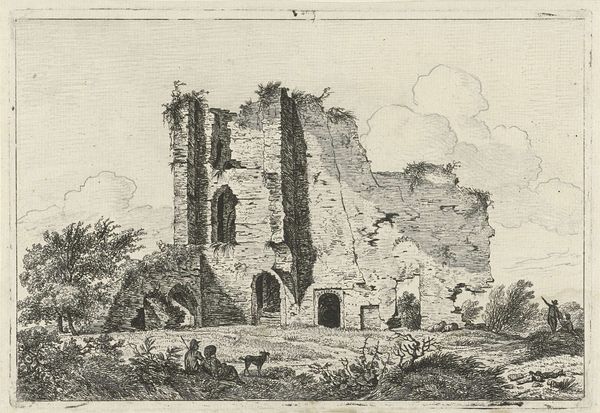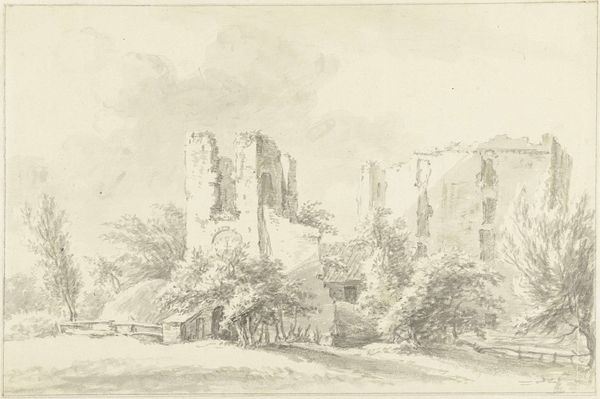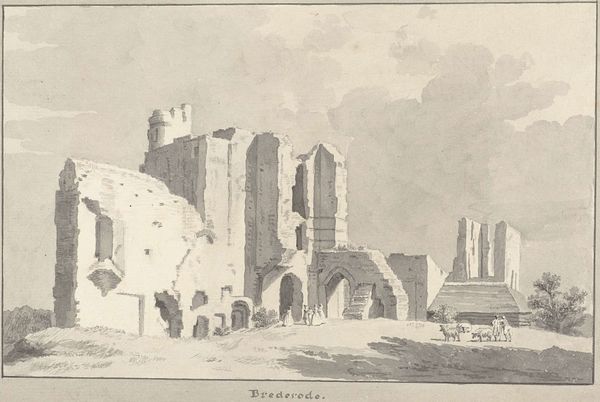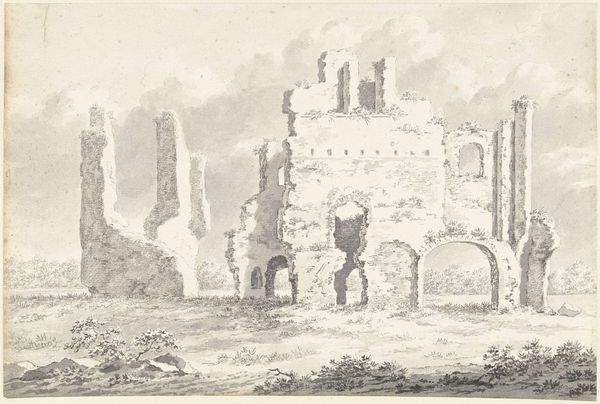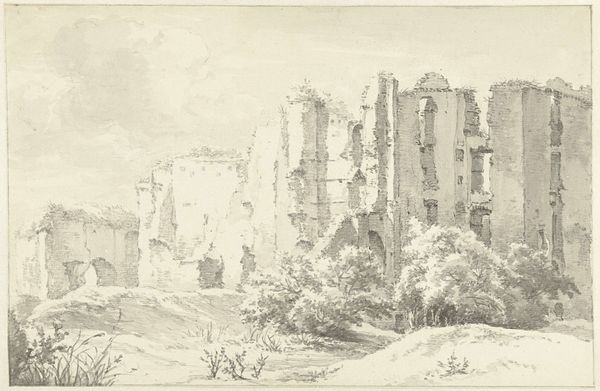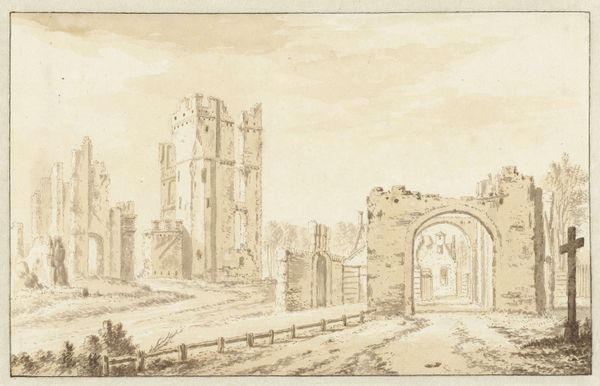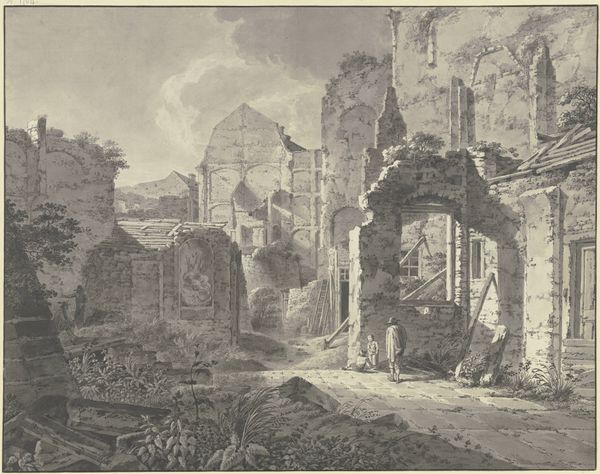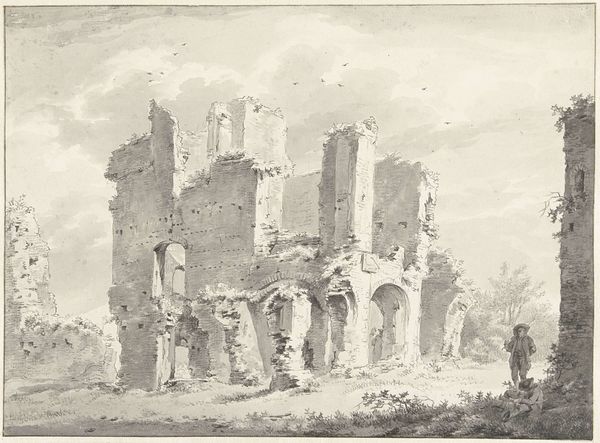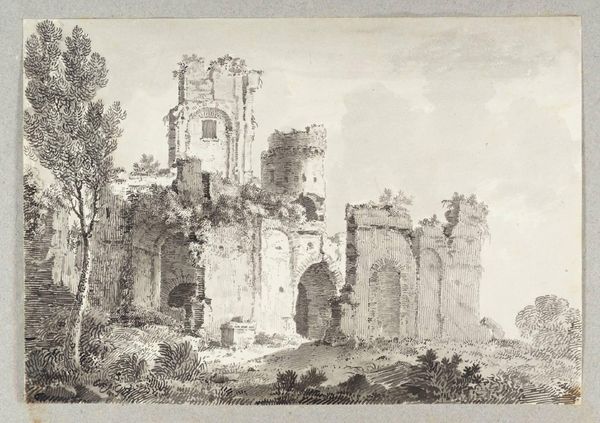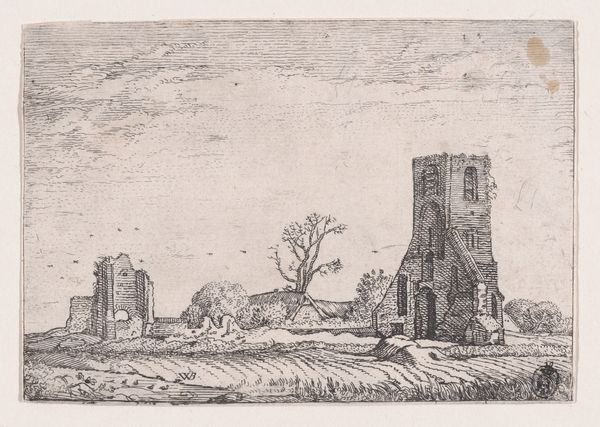
print, etching, engraving
# print
#
etching
#
landscape
#
romanticism
#
cityscape
#
engraving
Dimensions: height 186 mm, width 246 mm
Copyright: Rijks Museum: Open Domain
Curator: This print is titled "Ruïne van de abdij te Rijnsburg," created around 1812 by Joannes Pieter Visser Bender. It is rendered through etching and engraving. Editor: It hits you, doesn’t it? The stark contrast, ruins against that imposing church spire. It's strangely compelling—a delicate balance of desolation and aspiration. The whole scene feels both fragile and resilient, like a ghost story in broad daylight. Curator: Absolutely, and I think that tension speaks volumes about the social and political landscape of the time. Consider Romanticism, and the era’s fascination with ruins as symbols of lost empires and bygone eras—there’s an embedded critique of power. We see a very intentional juxtaposition of temporal and spiritual authority through the imagery. Editor: Spiritual authority! That makes total sense with the church rising above it all. Still, something about those crumbling walls just grabs me. Imagine the lives lived within those stones, now reduced to mere shadows. Almost like they have become one with the landscape, I can practically feel the damp earth and the weight of history just seeping through! Curator: Precisely. The crumbling abbey invites introspection about shifting societal structures and what is built versus what crumbles, and for whom. Beyond mere nostalgia, Romanticism can reflect, even unintentionally, the precarity inherent in class structures. In ruin we have tangible signifiers of previous eras and norms—what they valued versus how it served the populace. The people sitting near the church show the persistence of hope within such realities, in my estimation. Editor: Oh, that’s really lovely, the persistence of hope… It’s like the artist is inviting us to reflect on the ephemeral nature of power. This dance of ruin and hope somehow feels profoundly relevant now, too, a quiet whisper from the past that really invites us to see the now in a completely new way. Curator: Agreed. The image prompts important conversations about resilience, legacy, and what remains when institutions and ideologies fall. It’s all captured in that fascinating tableau. Editor: Beautifully said. I leave this with an image that speaks to both past, present, and a whole lot more about us than one would expect at first glance!
Comments
No comments
Be the first to comment and join the conversation on the ultimate creative platform.
